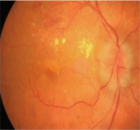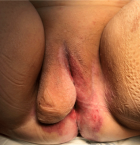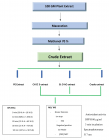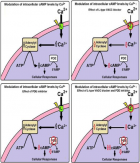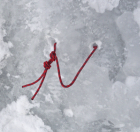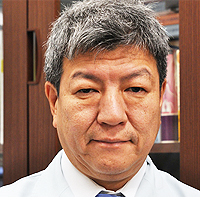Abstract
Research Article
Demographic survey and management outcome of Post-Neonatal Tetanus at the Ekiti state university teaching hospital, Ado Ekiti
Ajite AB*, Ogundare EO, Oluwayemi IO, Olatunya OS, Babatola A, Taiwo A, Komolafe A and Fatunla O
Published: 23 April, 2019 | Volume 3 - Issue 1 | Pages: 001-007
Background: Tetanus continues to threaten the survival of children in spite of it being a vaccine preventable disease. The objective of this study was to determine the prevalence of post-neonatal tetanus, review the vaccination of affected children, complications encountered and the outcome among affected children in a tertiary health institution in southwestern Nigeria.
Methods: The study was a retrospective study. Case notes of children outside neonatal life admitted to the Paediatric ward with clinical diagnosis of tetanus between January 2012 and October 2018 were retrieved and evaluated to identify socio-demographic and clinical characteristics. A review of the immunization history and cards was done where the immunization cards were available.
Results: 21children with post-neonatal tetanus were admitted over a period of six years (November 2012 to October 2018) with a prevalence of 0.3%. The M:F was 3.2:1. The mean age in years was 10.14 ±3.44 while the age range of the subjects was 4 to 16years. None of the patients had booster doses of tetanus toxoid (TT) outside the infancy period. Nine (42.9%) subjects had no previous TT vaccination, 2 (9.5%) had 3 doses of TT vaccine in infancy but developed tetanus at age ≥9 years, 1(4.8%) subject had a dose of TT while the remaining 9subjects had no proof of previous TT vaccination. The percentage mortality was 19% (4 out of 21). All the patients that died had no prior record of TT vaccination. Complications identified included laryngeal spasm and autonomic dysfunction.
Conclusion: Post-neonatal tetanus is still common in our locality because booster doses of Tetanus Toxoid are not part of the national immunization schedule. Complete dose of tetanus toxoid vaccination during infancy and booster doses at school entry is necessary and should be part of school health programme to forestall post-neonatal tetanus
Read Full Article HTML DOI: 10.29328/journal.jcavi.1001003 Cite this Article Read Full Article PDF
References
- Stephen S Aron. Tetanus (Clostridium tetani); Nelson Textbook of Pediatrics. Berman RE, Kliegman RM, Jenson HB, Stanton BF. 18th ed. Philadephia, 2007. Ref.: https://tinyurl.com/y5tpobpq
- Brook I. Current concepts in the management of Clostridium tetani infection. Expert Rev Anti Infect Ther. 2008; 6: 327-336. Ref.: https://tinyurl.com/y5otqum9
- TETANUS. 2018; Ref.: https://tinyurl.com/y5jeph9o
- Gonçalves G, Santos MA, Frade JG, Cunha JS. Levels of diphtheria and tetanus specific IgG of Portuguese adult women, before and after vaccination with adult type Td. Duration of immunity following vaccination. BMC Public Health. 2007; 7: 109. Ref.: https://tinyurl.com/yxv4fxkb
- Ölander RM, Auranen K, Härkänen T, Leino T. High tetanus and diphtheria antitoxin concentrations in Finnish adults; Time for new booster recommendations? Vaccine. 2009; 27: 5295–8298. Ref.: https://tinyurl.com/y6ch2t87
- Animasahun BA1, Gbelee OH1, Ogunlana AT2, Njokanma OF1, Odusanya O. Profile and outcome of patients with post-neonatal tetanus in a tertiary centre in south west Nigeria: any remarkable reduction in the scourge? Pan Afr Med J. 2015; 21: 254. Ref.: https://tinyurl.com/y2josntk
- Adegboye OA, Adeboye MAN, Anoba S. Childhood tetanus; Still a public health concern: A review of 95 case. Savannah Journal of Medical Research and Practice. 2012; 1. Ref.: https://tinyurl.com/y2lqvekv
- Mondal T, Aneja S, Tyagi A, Kumar P, Sharma D. A study of childhood tetanus in post-neonatal age group in Delhi. Indian Pediatr. 1994; 31: 1369-1372. Ref.: https://tinyurl.com/y6oonnrz
- Faulkner AE, MPH, Tejpratap SP, Tiwari. CDC; Manual for the Surveillance of vaccine preventable diseases: Tetanus, chapter 14. Ref.: https://tinyurl.com/y4fnphuv
- Wassilak SGF, Roper MH, Kretsinger K, Orenstein WA. Tetanus toxoid. In: Plotkin SA, Orenstein WA, Offit PA, eds. Vaccines fifth edition. Philadelphia: Saunders. 2012; 746-772.
- Final 2015 reports of nationally notifiable infectious diseases and conditions. MMWR Morb Mortal Wkly Rep. 2016; 65: 1306-1321. Ref.: https://tinyurl.com/y3awd2sp
- Public health reporting and national notification for tetanus. CSTE position statements 09-ID-63. Atlanta, GA: CSTE; 2010. 1-8. Ref.: https://tinyurl.com/y69vslvj
- Oyedeji GA. Socio-economic and cultural background of hospitalised children in Ilesha. Nig J Paediatr. 1985; 12: 111-117. Ref.: https://tinyurl.com/y3wrx9rf
- Oyedeji OA, Fadero F, Joel-Medewase F, Elemile P, Oyedeji GA. Trends in neonatal and post-neonatal tetanus admissions at a Nigerian teaching hospital. J Infect Dev Ctries. 2012; 6: 847-853. Ref.: https://tinyurl.com/y6g2kp2a
- Anah MU, Etuk IS, Ikpeme OE, Ntia HU, Ineji EO, et al. Post Neonatal Tetanus in Calabar, Nigeria: A 10 Year Review. Nigerian Medical Practitioner.2009; 54. Ref.: https://tinyurl.com/y4p6yuxf
- Alhaji MA, Akuhwa RT, Mustapha MG, Ashir GM, Mava Y, et al. Post-neonatal tetanus in University of Maiduguri Teaching Hospital, North-eastern Nigeria. Nig J Paediatr. 2013; 40: 154-157. Ref.: https://tinyurl.com/y34kzoft
- Fatunde OJ, Familusi JB. Post-neonatal tetanus in Nigeria: The need for booster doses of tetanus toxoid. Nig J Paediatr. 2001; 28: 35-38. Ref.: https://tinyurl.com/y3g3lt54
- Fortium M, Maine N, Mendy M, Hall A, George M, et al. Measles, polio and tetanus toxoid antibody levels in Gambian children aged 3-4years following routine vaccination. Trans R Soc Trop Med Hyg. 1995; 89: 326-329. Ref.: https://tinyurl.com/y3bdun6r
- Cilia FG, Spenz DJR, Urbieta EM, Carcedo MA, Perez TE. Immunity against tetanus in Childhood. An Esp Pediatr. 1993: 38; 499-502. Ref.: https://tinyurl.com/yxeeatlp
- Aboud S, Matre R, Lyamuya EF, Kristoffersen EK. Levels and avidity of antibodies to tetanus toxoid in children aged 1-15 years in Dar es Salaam and Bagamoyo, Tanzania. Ann Trop Paediatr. 2000; 20: 313-322. Ref.: https://tinyurl.com/yxeeatlp
- Yaguo ILE, Uchenwa-Onyenegecha TA. Tetanus in Nigeria: Is the end in sight? Greener Journal of Medical Sciences. 2015; 5: 053-057. Ref.: https://tinyurl.com/y6lejyc8
- Akuhwa RT, Alhaji MA, Bello MA, Bulus SG. Post-neonatal tetanus in Nguru, Yobe State, North-eastern Nigeria. Nig Med Pract. 2010; 57: 40-42. Ref.: https://tinyurl.com/yy8t29ze
- Nte AR, Mayuku A, Oruamobo RS. Neonatal and post neonatal tetanus: the time to act is now. Nig J Paediatr. 2002; 29: 85.
- Lambo JA, Anokye EA. Prognostic factors for mortality in neonatal tetanus: a systematic review and meta-analysis. Int J Infect Dis. 2013; 17: 1100-1110. Ref.: https://tinyurl.com/y6axfz5r
- Gbadegesin RA, Adeyemo AA, Osinusi K. Childhood post-neonatal tetanus. Nig J Paediatr. 1996; 23: 11-15. Ref.: https://tinyurl.com/y2l877kg
Figures:
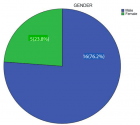
Figure 1
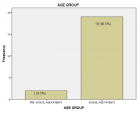
Figure 2
Similar Articles
-
Exploring the Debate on VaccinesD. John Doyle*. Exploring the Debate on Vaccines. . 2017 doi: 10.29328/journal.jcavi.1001001; 1: 001-002
-
Importance of prevention-A letter to the editorAkanksha Rathi*. Importance of prevention-A letter to the editor. . 2018 doi: 10.29328/journal.jcavi.1001002; 2: 001-001
-
Demographic survey and management outcome of Post-Neonatal Tetanus at the Ekiti state university teaching hospital, Ado EkitiAjite AB*,Ogundare EO,Oluwayemi IO,Olatunya OS,Babatola A,Taiwo A,Komolafe A,Fatunla O. Demographic survey and management outcome of Post-Neonatal Tetanus at the Ekiti state university teaching hospital, Ado Ekiti . . 2019 doi: 10.29328/journal.jcavi.1001003; 3: 001-007
-
Educational strategy to increase knowledge and risk perception about sexually transmitted infection in polytechnic studentsAlba Cortes Alfaro*,Damarys Chacón O’farrill. Educational strategy to increase knowledge and risk perception about sexually transmitted infection in polytechnic students. . 2020 doi: 10.29328/journal.jcavi.1001004; 4: 001-004
-
To be and not to be: With wisdom and grace or stupidity and disgrace after the SARS-CoV2 outbreakYue Zhang*. To be and not to be: With wisdom and grace or stupidity and disgrace after the SARS-CoV2 outbreak. . 2020 doi: 10.29328/journal.jcavi.1001005; 4: 005-005
-
Zn2+ Ions-Immune Virucidal activities for children and adults with preventions against 2019-nCoV and COVID-19 infectionTsuneo Ishida*. Zn2+ Ions-Immune Virucidal activities for children and adults with preventions against 2019-nCoV and COVID-19 infection. . 2020 doi: 10.29328/journal.jcavi.1001006; 4: 006-014
-
RBD targeted COVID vaccine and full length spike-protein vaccine (mutation and glycosylation role) relationship with procoagulant effectLuisetto M*,Tarro G,Farhan Ahmad Khan,Khaled Edbey,Mashori GR,Yesvi AR,Latyschev OY. RBD targeted COVID vaccine and full length spike-protein vaccine (mutation and glycosylation role) relationship with procoagulant effect. . 2021 doi: 10.29328/journal.jcavi.1001007; 5: 001-008
-
Impact of coronavirus pandemic on safety and time of administration of subcutaneous immunotherapy among pediatric patientsAna Margarida Mesquita*,Ricardo Moço Coutinho,José Luís Plácido,Alice Coimbra. Impact of coronavirus pandemic on safety and time of administration of subcutaneous immunotherapy among pediatric patients. . 2022 doi: 10.29328/journal.jcavi.1001008; 6: 001-004
-
Follow-up of patients with sarcoidosis in an internal medicine unit from a hospital in Asturias, Spain. Analysis of extrapulmonary manifestationsGómez de la Torre R*,Charca Benavente L,Yllera Gutiérrez C,Rolle V,Colunga Argüelles D. Follow-up of patients with sarcoidosis in an internal medicine unit from a hospital in Asturias, Spain. Analysis of extrapulmonary manifestations. . 2022 doi: 10.29328/journal.jcavi.1001009; 6: 005-007
-
Male in Early Adolescence Presenting with Guillain-Barré Syndrome Following BECOV2D VaccineVinit Suri*, Kanika Suri, Kunal Suri, Priyal. Male in Early Adolescence Presenting with Guillain-Barré Syndrome Following BECOV2D Vaccine. . 2023 doi: 10.29328/journal.jcavi.1001010; 7: 001-004
Recently Viewed
-
Cystoid Macular Oedema Secondary to Bimatoprost in a Patient with Primary Open Angle GlaucomaKonstantinos Kyratzoglou*,Katie Morton. Cystoid Macular Oedema Secondary to Bimatoprost in a Patient with Primary Open Angle Glaucoma. Int J Clin Exp Ophthalmol. 2025: doi: 10.29328/journal.ijceo.1001059; 9: 001-003
-
Metastatic Brain Melanoma: A Rare Case with Review of LiteratureNeha Singh,Gaurav Raj,Akshay Kumar,Deepak Kumar Singh,Shivansh Dixit,Kaustubh Gupta*. Metastatic Brain Melanoma: A Rare Case with Review of Literature. J Radiol Oncol. 2025: doi: ; 9: 050-053
-
Depression as a civilization-deformed adaptation and defence mechanismBohdan Wasilewski*,Olha Yourtsenyuk,Eugene Egan. Depression as a civilization-deformed adaptation and defence mechanism. Insights Depress Anxiety. 2020: doi: 10.29328/journal.ida.1001013; 4: 008-011
-
Drinking-water Quality Assessment in Selective Schools from the Mount LebanonWalaa Diab, Mona Farhat, Marwa Rammal, Chaden Moussa Haidar*, Ali Yaacoub, Alaa Hamzeh. Drinking-water Quality Assessment in Selective Schools from the Mount Lebanon. Ann Civil Environ Eng. 2024: doi: 10.29328/journal.acee.1001061; 8: 018-024
-
Rapid Microbial Growth in Reusable Drinking Water BottlesQishan Liu*,Hongjun Liu. Rapid Microbial Growth in Reusable Drinking Water Bottles. Ann Civil Environ Eng. 2017: doi: 10.29328/journal.acee.1001007; 1: 055-062
Most Viewed
-
Evaluation of Biostimulants Based on Recovered Protein Hydrolysates from Animal By-products as Plant Growth EnhancersH Pérez-Aguilar*, M Lacruz-Asaro, F Arán-Ais. Evaluation of Biostimulants Based on Recovered Protein Hydrolysates from Animal By-products as Plant Growth Enhancers. J Plant Sci Phytopathol. 2023 doi: 10.29328/journal.jpsp.1001104; 7: 042-047
-
Sinonasal Myxoma Extending into the Orbit in a 4-Year Old: A Case PresentationJulian A Purrinos*, Ramzi Younis. Sinonasal Myxoma Extending into the Orbit in a 4-Year Old: A Case Presentation. Arch Case Rep. 2024 doi: 10.29328/journal.acr.1001099; 8: 075-077
-
Feasibility study of magnetic sensing for detecting single-neuron action potentialsDenis Tonini,Kai Wu,Renata Saha,Jian-Ping Wang*. Feasibility study of magnetic sensing for detecting single-neuron action potentials. Ann Biomed Sci Eng. 2022 doi: 10.29328/journal.abse.1001018; 6: 019-029
-
Pediatric Dysgerminoma: Unveiling a Rare Ovarian TumorFaten Limaiem*, Khalil Saffar, Ahmed Halouani. Pediatric Dysgerminoma: Unveiling a Rare Ovarian Tumor. Arch Case Rep. 2024 doi: 10.29328/journal.acr.1001087; 8: 010-013
-
Physical activity can change the physiological and psychological circumstances during COVID-19 pandemic: A narrative reviewKhashayar Maroufi*. Physical activity can change the physiological and psychological circumstances during COVID-19 pandemic: A narrative review. J Sports Med Ther. 2021 doi: 10.29328/journal.jsmt.1001051; 6: 001-007

HSPI: We're glad you're here. Please click "create a new Query" if you are a new visitor to our website and need further information from us.
If you are already a member of our network and need to keep track of any developments regarding a question you have already submitted, click "take me to my Query."








